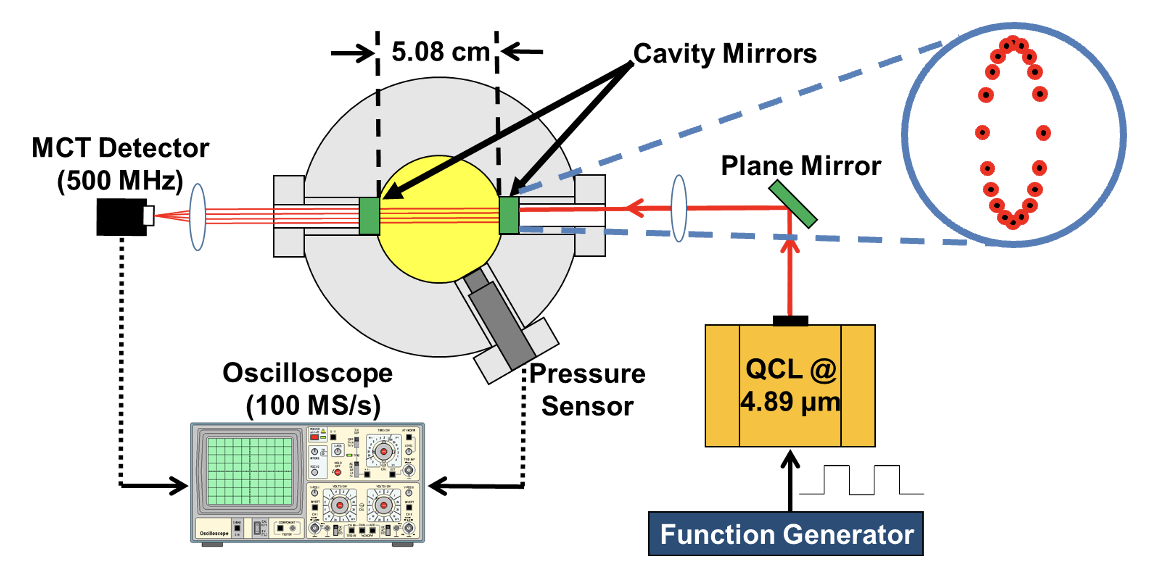
Farooq's group for Advanced Sensing Technology and Energy Research (FASTER)
e7f3ae135f1f42c6a51d105bcf4199fe.tmb-small.png?Culture=en&sfvrsn=a8ecec2b_1)

e7f3ae135f1f42c6a51d105bcf4199fe.tmb-small.png?Culture=en&sfvrsn=a8ecec2b_1)


Our research group has advanced the field of laser sensing by developing new strategies and novel sensors in the mid-IR wavelength region. The mid-IR is considered to be the ‘molecular fingerprint’ as it provides access to fundamental vibrational bands of many molecules and the possibility of developing highly sensitive and interference-free optical sensors. With the relatively recent availability of stable quantum cascade lasers (QCLs) and interband cascade lasers (ICLs) emitting in the mid-IR, our group has been at the forefront of exploiting the capabilities of these sources for chemical kinetics research and environmental monitoring.
We designed and developed a novel chirped-pulse strategy to perform spectrally-resolved, calibration-free and ultrafast temperature measurements in a shock tube (Chrystie et al., Optics Letter 2014), and later applied this technique to measure the first-stage temperature rise during low-temperature oxidation studies in an RCM (Nasir et al., PROCI 2017). This work, to our knowledge, was the first direct experimental evidence of the inadequacy of zero-dimensional modelling for two-stage ignition experiments in RCMs.
We increased the sensitivity of our diagnostics by employing cavity-enhanced techniques for trace measurements of ethylene (Alquaity et al., Optics Express 2015) and H2O2 (Alquaity et al., Applied Physics B 2017) in shock tube kinetic studies.
Thereafter, we combined the benefits of chirped-pulse and cavity-enhancement to measure trace amounts of carbon monoxide (Nasir & Farooq, Optics Express 2018). We utilized this new strategy to measure carbon monoxide formation during low-temperature oxidation of paraffinic fuels in diluted RCM experiments (Nasir & Farooq, PROCI 2019). Recently, we demonstrated chirped-pulse temperature measurements with water vapor as the absorbing gas (Nasir & Farooq, Applied Physics B 2019) in contrast to carbon monoxide.